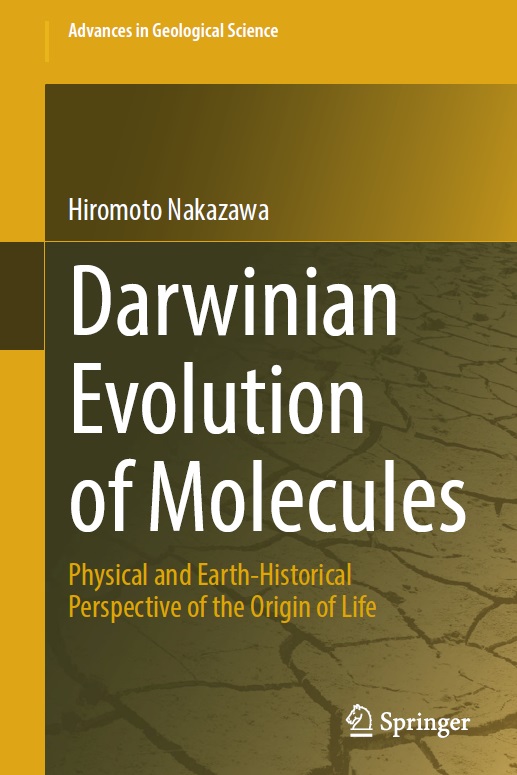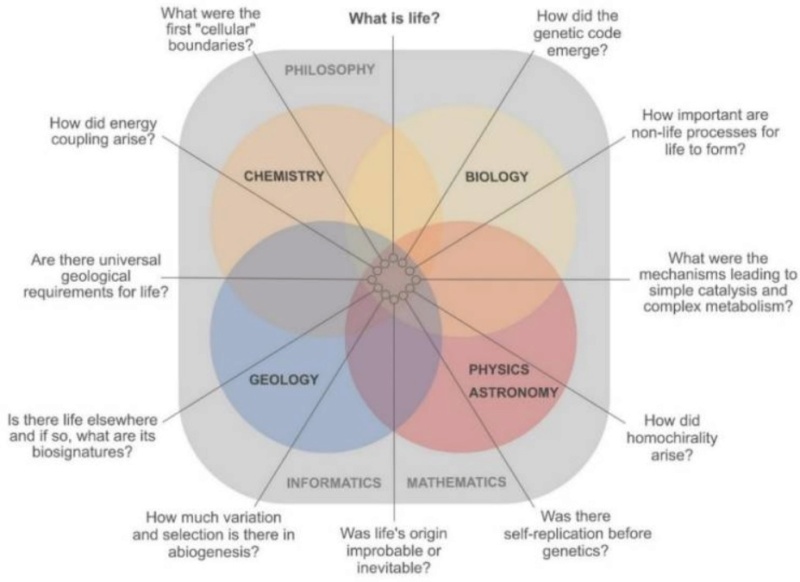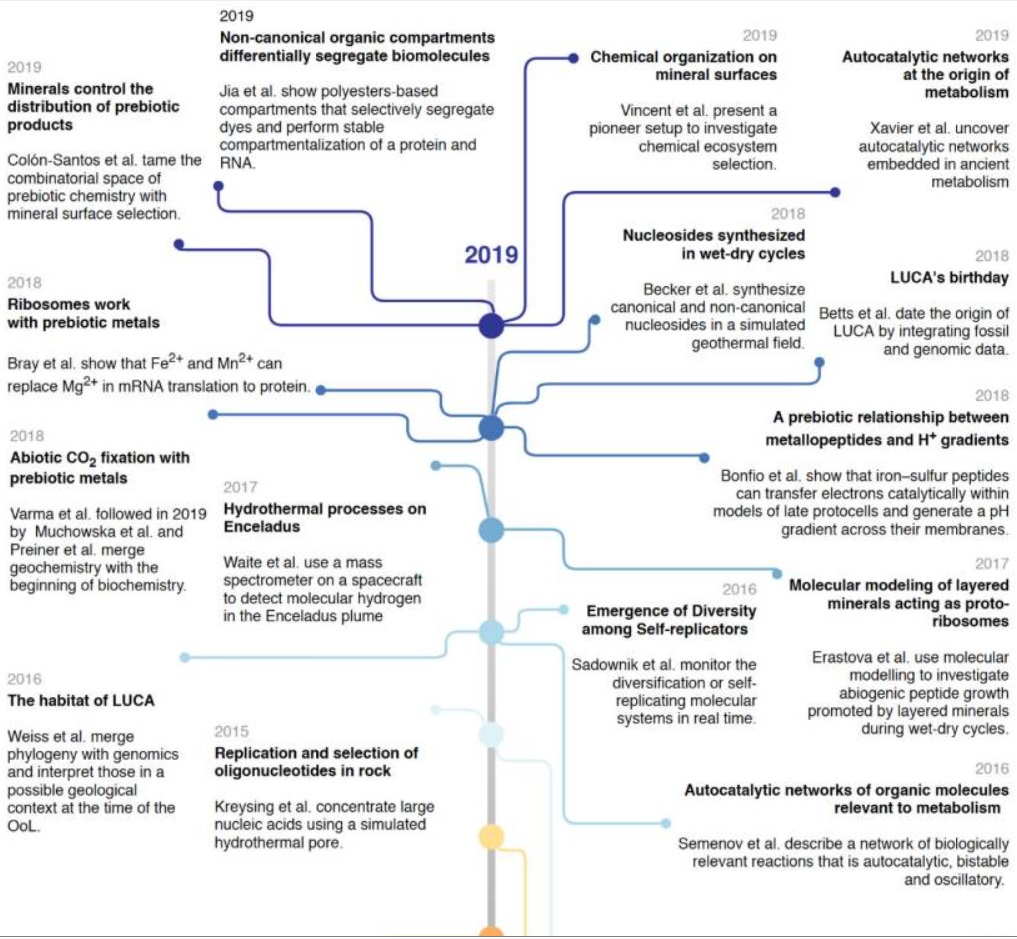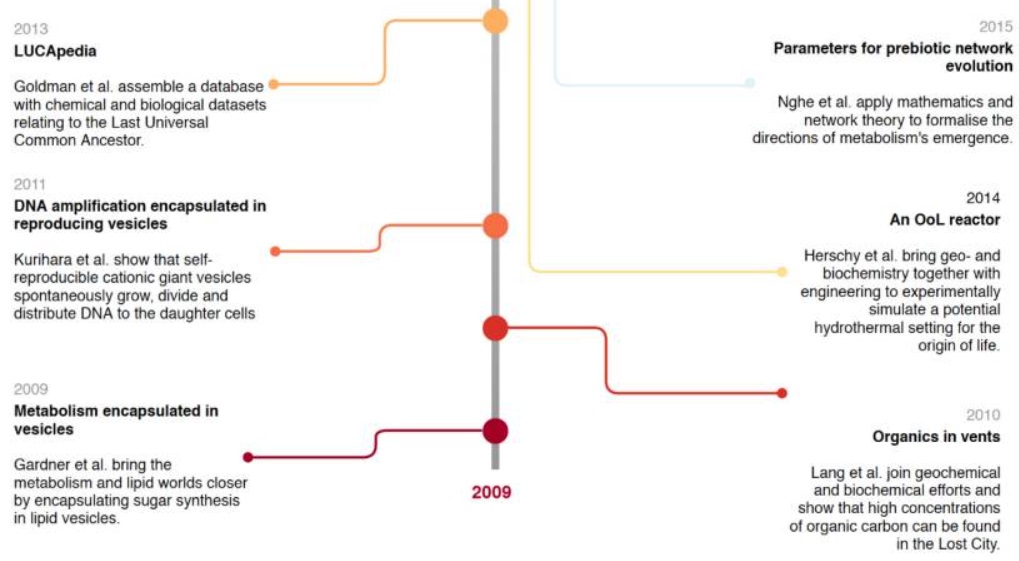https://reasonandscience.catsboard.com/t1279-abiogenesis-is-mathematically-impossible
Open questions in prebiotic chemistry to explain the origin of the four basic building blocks of life
The trajectory from a prebiotic synthesis of the basic building blocks of life, to the sophisticated synthesis by cell factories: an unsolved riddle
Mainstream scientific papers confirm indirectly that cells are irreducibly complex and interdependent
Paradoxes in the Origin of Life
Biological Cell factories point overwhelmingly to set up by intelligent design
At least 14 major hurdles of abiogenesis
Abiogenesis? Impossible !!
https://www.youtube.com/watch?v=ycJblRcgqXk&t=420s
Jack W. Szostak: It is virtually impossible to imagine how a cell’s machines, which are mostly protein-based catalysts called enzymes, could have formed spontaneously as life first arose from nonliving matter around 3.7 billion years ago.
https://www.mrgscience.com/uploads/2/0/7/9/20796234/origin_of_life_sci_am.pdf
Michael Polany: “Pasteur’s claim that any living being comes from another living being (‘omne vivum ex vivo’) continues to fully agree with all experimental data of pre-biotic chemistry”
https://uncommondescent.com/intelligent-design/on-the-impossibility-of-abiogenesis/
There's nothing about inert chemicals and physical forces that say we want to get life at the end of the abiogenesis process. Molecules do not have the "drive", they do not "want" to find ways to harness energy and to become more efficient
No researcher has ever tried to build a nano-scaled factory in their laboratory by leaving the raw materials, and waiting for unguided processes to take their course...
Etiology, the science of causes, in regards to the origin of the first living self-replicating cell, the hypothesis that natural, unguided random events were responsible, has led to dead ends, to the constatation that the lack of natural selection produces too unspecific results in a wast, basically limitless chemical space and space of sequence combinations of molecules. Only an intelligent agency with intent and foresight can in principle, select the required biomolecules, inject information in the system, and build the energy generating mechanisms, three things that must occur simultaneously.
The natural tendency is going from order to disorder
It's much easier to mess things up than to order things, to bring them into a special sequence, or to line them up that bear a special function. That's a general principle that we observe in nature. Imagine taking a new pack of cards they come in in numerical order and when one shuffles them then, of course, they're going to become disordered, and if someone takes a disordered pack of cards and shuffles them and gets an exact order state it's evident there was a magic trick involved. In nature, it is well established that natural states also tend to go from order to disorder. But living cells do the opposite. They take up materials from the environment and transform them into complex specified building blocks of life, and energy in the form of ATP. That is a trend from disorder to order. But all this has nothing to do with thermodynamics, where the order goes to disorder in a closed system, where energy disperses, and ordered systems transform themselves into chaotic states of affairs. Cells in our bodies degrade and die. Heat goes always from hot to cold. In short: The energy in the universe is constant, but the entropy of the universe tends from low to high. The tendency is to go from order to disorder.
Nils Bohr suggested in a lecture published in Nature “life is consistent with, but underivable from physics and chemistry”
https://citeseerx.ist.psu.edu/viewdoc/download?doi=10.1.1.94.171&rep=rep1&type=pdf
Paul Davies & Jeremy England • The Origins of Life: Do we need a new theory for how life began? 25 de jun. de 2021
https://www.youtube.com/watch?v=R9IU2ZWrkhg
Jeremy England: The question is what molecules do when they're bouncing around together in an open system where you have energy and matter constantly flowing through it is you end up having to think in particular about how the matter that's in the system which is what you're interested in that's where the order you're trying to explain is going to occur how that matter receives the energy that's flowing through it and how that impacts how it changes over time
when you have a system an open system where there's some source of energy in its environment or that's driving it that's pushing energy through the system energy is just either motion or the potential for motion that's really the whole concept of energy was invented in newtonian mechanics to explain how things can cause each other to move.
So when you have this vast space of possible combinations of building blocks and you have an open system where there's a source of energy in the environment that's going to be dumping energy into the system differently depending on the system's shape that's going to allow for a biased evolutionary exploration of the space of possible shapes where you start in some random shape some inanimate shape but then how your shape affects how you absorb energy and how you absorb energy affects how you change your shape and when you close that loop it actually has some of the same character of what we think of as the darwinian process, in fact, it's a physical generalization of the same character of the darwinian process which is a special case of this picture so you can still end up with a specially fine-tuned relationship between the pattern of the environmental energy source and the shapes of structures that form once.
Paul Davies: Life is anything but chaotic uh it's constrained energy flow and the when you look at these more subtle and complex processes at the molecular level you see that in this great space of possibilities which seems almost infinite it's actually narrowed a great deal just by the physics now for me this is an important part of the story. A new kind of physical law he said we must be prepared to find a new kind of physical law prevailing in it and i believe that there is a new kind of fiscal law i don't think we've got all the details worked out and i just give some ideas in in the book as to the type of physical law that that might be and i'm open to the fact it might involve quantum mechanics and other things or so.
My comment: There is only one source that can organize matter in a way that energy-generating turbines are created: Intelligence. Its neither darwinian mechanisms ( England), nor
Eugene V. Koonin: The Logic of Chance: page 252:
Despite many interesting results to its credit, when judged by the straightforward criterion of reaching (or even approaching) the ultimate goal, the origin of life field is a failure—we still do not have even a plausible coherent model, let alone a validated scenario, for the emergence of life on Earth. Certainly, this is due not to a lack of experimental and theoretical effort, but to the extraordinary intrinsic difficulty and complexity of the problem. A succession of exceedingly unlikely steps is essential for the origin of life, from the synthesis and accumulation of nucleotides to the origin of translation; through the multiplication of probabilities, these make the final outcome seem almost like a miracle.
Steve Benner: Paradoxes in the origin of life
Discussed here is an alternative approach to guide research into the origins of life, one that focuses on “paradoxes”, pairs of statements, both grounded in theory and observation, that (taken
together) suggest that the “origins problem” cannot be solved.
Graham Cairns-Smith: Genetic takeover, page 66:
Now you may say that there are alternative ways of building up nucleotides, and perhaps there was some geochemical way on the early Earth. But what we know of the experimental difficulties in nucleotide synthesis speaks strongly against any such supposition. However it is to be put together, a nucleotide is too complex and metastable a molecule for there to be any reason to expect an easy synthesis.
Garrett: Biochemistry, 6th ed, page 665
Key compounds, such as arginine, lysine, and histidine; the straight-chain fatty acids; porphyrins; and essential coenzymes, have not been convincingly synthesized under simulated prebiotic conditions.
Robert Shapiro: A Replicator Was Not Involved in the Origin of Life
A profound difficulty exists, however, with the idea of RNA, or any other replicator, at the start of life. Existing replicators can serve as templates for the synthesis of additional copies of themselves, but this device cannot be used for the preparation of the very first such molecule, which must arise spontaneously from an unorganized mixture. The formation of an information-bearing homopolymer through undirected chemical synthesis appears very improbable.
Kenji Ikehara Evolutionary Steps in the Emergence of Life Deduced from the Bottom-Up Approach and GADV Hypothesis (Top-Down Approach) 2016 Mar; 6
(1) nucleotides have not been produced from simple inorganic compounds through prebiotic means and have not been detected in any meteorites, although a small quantity of nucleobases can be obtained.
(2) It is quite difficult or most likely impossible to synthesize nucleotides and RNA through prebiotic means.
(3) It must also be impossible to self-replicate RNA with catalytic activity on the same RNA molecule.
(4) It would be impossible to explain the formation process of genetic information according to the RNA world hypothesis, because the information is comprised of triplet codon sequence, which would never be stochastically produced by joining of mononucleotides one by one.
(5) The formation process of the first genetic code cannot be explained by the hypothesis either, because a genetic code composed of around 60 codons must be prepared to synthesize proteins from the beginning.
(6) It is also impossible to transfer catalytic activity from a folded RNA ribozyme to a protein with a tertiary structure.
R.Shapiro (1983): Many accounts of the origin of life assume that the spontaneous synthesis of a self-replicating nucleic acid could take place readily. Serious chemical obstacles exist, however, which make such an event extremely improbable. Prebiotic syntheses of adenine from HCN, of D,L-ribose from adenosine, and of adenosine from adenine and D-ribose have in fact been demonstrated. However these procedures use pure starting materials, afford poor yields, and are run under conditions which are not compatible with one another. Any nucleic acid components which were formed on the primitive earth would tend to hydrolyze by a number of pathways. Their polymerization would be inhibited by the presence of vast numbers of related substances which would react preferentially with them.
https://pubmed.ncbi.nlm.nih.gov/6462692/
Peter Tompa: The Levinthal paradox of the interactome 2011
The inability of the interactome to self-assemble de novo imposes limits on efforts to create artificial cells and organisms, that is, synthetic biology. In particular, the stunning experiment of “creating” a viable bacterial cell by transplanting a synthetic chromosome into a host stripped of its own genetic material36 has been heralded as the generation of a synthetic cell43 (although not by the paper's authors). Such an interpretation is a misnomer, rather like stuffing a foreign engine into a Ford and declaring it to be a novel design.
https://www.ncbi.nlm.nih.gov/pmc/articles/PMC3302650/
Claim: Tom Jump: RNA polymerization on clay has explained the problem of RNA polymerization. Applying inductive reasoning, we can generalize, and so say that naturalism explains the origin of life better than creationism, which provides no explanation.
Tom Jump Otangelo Grasso Should we be atheists or theists Mar 19, 2020
https://www.youtube.com/watch?v=bRYfpCmP9tw
Reply: Using inductive reasoning fails in the attempt to explain the origin of life, because several different fields are involved, and various different problems require an explanation.
Prof. Dr. Ruth E. Blake (2020): Special Issue "Phosphorus in the Origin of Life"
Investigating the origin of life requires an integrated and multidisciplinary approach including but not limited to biochemistry, microbiology, biophysics, geology, astrobiology, mathematical modeling, and astronomy. 13
What's quite challenging is that life is such a collection of different things that work in an integrated fashion so well together not just different components but life is based on chemistry and information. The origin of both are entirely different issues. Different separate behaviors and different accomplishments, like self-replication, information transfer, or whether it's forming compartmentalization or modularity contribute to the overall accomplishment of the cell. One could break and divide the cell systems into different separate functional parts and various different things. Attempting to explain the origin of the enclosed cell membrane, is entirely different than explaining the origin of carbon and nitrogen fixation, upon which the origin of the basic building blocks like amino acids, RNA, and DNA depends - which - again, is also a different issue. We can move on to the quest for the origin of polymerization of RNA, DNA, or amino acids and the origin of instructional assembly information, and the genetic code. And the origin of energy production, etc. So there is a very big standing leap: When one has eventually tackled one problem, many others remain.
Eliminative inductions prove that natural origins of cells merely by chemical reactions are false, and the only alternative, design is true. And abductive reasoning to the best explanation lead unambiguously to intelligent design as the best explanation. To the origin of life by the input of information, energy, and directed energy by an intelligent designer.
Some of the worlds leading scientists in the field of synthetic chemistry, biochemistry, and computational biology, like James Tour, Graham Cairns-Smith, Eugene Koonin and Steve Benner have stated that solving the mystery of the origin of life is categorically not possible, that science has no clue how to solve the riddle, that abiogenesis research is a failure, and the most difficult problem that faces evolutionary biology and, arguably, biology in general.
Edward J.Steele Cause of Cambrian Explosion - Terrestrial or Cosmic? August 2018
The idea of abiogenesis should have long ago been rejected.
…the dominant biological paradigm — abiogenesis in a primordial soup. The latter idea was developed at a time when the earliest living cells were considered to be exceedingly simple structures that could subsequently evolve in a Darwinian way. These ideas should of course have been critically examined and rejected after the discovery of the exceedingly complex molecular structures involved in proteins and in DNA. But this did not happen. Modern ideas of abiogenesis in hydrothermal vents or elsewhere on the primitive Earth have developed into sophisticated conjectures with little or no evidential support. …independent abiogenesis on the cosmologically diminutive scale of oceans, lakes or hydrothermal vents remains a hypothesis with no empirical support…The conditions that would most likely to have prevailed near the impact-riddled Earth’s surface 4.1–4.23 billion years ago were too hot even for simple organic molecules to survive let alone evolve into living complexity. The requirement now, on the basis of orthodox abiogenic thinking, is that an essentially instantaneous transformation of non-living organic matter to bacterial life occurs, an assumption we consider strains credibility of Earth-bound abiogenesis beyond the limit. The transformation of an ensemble of appropriately chosen biological monomers (e.g. amino acids, nucleotides) into a primitive living cell capable of further evolution appears to require overcoming an information hurdle of superastronomical proportions, an event that could not have happened within the time frame of the Earth except, we believe, as a miracle. All laboratory experiments attempting to simulate such an event have so far led to dismal failure.
https://www.sciencedirect.com/science/article/pii/S0079610718300798
Eugene Koonin: advisory editorial board of Trends in Genetics writes in his book: The Logic of Chance:
" The Nature and Origin of Biological Evolution, Eugene V. Koonin, page 351:
" Despite many interesting results to its credit, when judged by the straightforward criterion of reaching (or even approaching) the ultimate goal, the origin of life field is a failure—we still do not have even a plausible coherent model, let alone a validated scenario, for the emergence of life on Earth. Certainly, this is due not to a lack of experimental and theoretical effort, but to the extraordinary intrinsic difficulty and complexity of the problem. A succession of exceedingly unlikely steps is essential for the origin of life, from the synthesis and accumulation of nucleotides to the origin of translation; through the multiplication of probabilities, these make the final outcome seem almost like a miracle.
The origin of life is the most difficult problem that faces evolutionary biology and, arguably, biology in general. Indeed, the problem is so hard and the current state of the art seems so frustrating that some researchers prefer to dismiss the entire issue as being outside the scientific domain altogether, on the grounds that unique events are not conducive to scientific study.
A succession of exceedingly unlikely steps is essential for the origin of life, from the synthesis and accumulation of nucleotides to the origin of translation; through the multiplication of probabilities, these make the final outcome seem almost like a miracle. The difficulties remain formidable. For all the effort, we do not currently have coherent and plausible models for the path from simple organic molecules to the first life forms. Most damningly, the powerful mechanisms of biological evolution were not available for all the stages preceding the emergence of replicator systems. Given all these major difficulties, it appears prudent to seriously consider radical alternatives for the origin of life. "
James Tour: Dr. Tour on the Origin of Life at Syracuse University Cru min. 23:53
Origin of life research is a retarded field of science little as advanced in the field since the highly touted 1952 Miller year experiment after 2/3 of a century the world is no closer to generating life
from small molecules or any molecules for that matter than it was in 1952 one could argue that origin of life research is, even more, befuddle now than it was in 1952 since more questions have evolved in answers since we understand much more about the cell it's made us realize that we're further from having a cell.
At least Miller Urey took some simple compounds passed them across a large voltage gap and saw some scrambled amino acids at least that was simple stuff going on in there now there are really elaborate experiments and still they get very little this explains the retarded state of origin of life research
https://www.youtube.com/watch?v=-Gsa58Rm8Sk&feature=youtu.be
It appears that nature itself provides conclusive evidence that natural processes are incapable of assembling a living cell. Wherever one looks there are problems. 8
Pssst! Don't tell the creationists, but scientists don't have a clue how life began
The RNA world is so dissatisfying that some frustrated scientists are resorting to much more far-out—literally—speculation. Dissatisfied with conventional theories of life's beginning, Crick conjectured that aliens came to Earth in a spaceship and planted the seeds of life here billions of years ago. Creationists are no doubt thrilled that origin-of-life research has reached such an impasse (see for example the screed "Darwinism Refuted," which cites my 1991 article), but they shouldn't be. Their explanations suffer from the same flaw: What created the divine Creator? And at least scientists are making an honest effort to solve life's mystery instead of blaming it all on God.
https://blogs.scientificamerican.com/cross-check/pssst-dont-tell-the-creationists-but-scientists-dont-have-a-clue-how-life-began/
Steve Benner: Paradoxes in the origin of life. 2015 Jan 22 Benner SA1.
S.Benner is the founder and president of the Westheimer Corporation, a private research organization, and a prior Harvard University professor. He is one of the world’s leading authorities on abiogenesis. This is his evaluation of what he has observed: Discussed here is an alternative approach to guide research into the origins of life, one that focuses on “paradoxes”, pairs of statements, both grounded in theory and observation, that (taken
together) suggest that the “origins problem” cannot be solved.
We are now 60 years into the modern era of prebiotic chemistry. That era has produced tens of thousands of papers attempting to define processes by which “molecules that look like biology” might arise from “molecules that do not look like biology” …. For the most part, these papers report “success” in the sense that those papers define the term…. And yet, the problem remains unsolved
https://sci-hub.ee/10.1007/s11084-014-9379-0
"We have failed in any continuous way to provide a recipe that gets from the simple molecules that we know were present on early Earth to RNA." "The first paradox is the tendency of organic matter to devolve and to give tar. If you can avoid that, you can start to try to assemble things that are not tarry, but then you encounter the water problem, which is related to the fact that every interesting bond that you want to make is unstable, thermodynamically, with respect to water. If you can solve that problem, you have the problem of entropy, that any of the building blocks are going to be present in a low concentration; therefore, to assemble a large number of those building blocks, you get a gene-like RNA -- 100 nucleotides long -- that fights entropy. And the fourth problem is that even if you can solve the entropy problem, you have a paradox that RNA enzymes, which are maybe catalytically active, are more likely to be active in the sense that destroys RNA rather than creates RNA."
Graham Cairns-Smith: Chemistry and the Missing Era of Evolution
The “RNA world” idea requires a geochemically implausible supply of RNA monomers.
https://sci-hub.tw/https://www.ncbi.nlm.nih.gov/pubmed/18260066
Cairns-Smith: Genetic takeover,page 66:
The implausibility of prevital nucleic acid
Now you may say that there are alternative ways of building up nucleotides, and perhaps there was some geochemical way on the early Earth. But what we know of the experimental difficulties in nucleotide synthesis speaks strongly against any such supposition. However it is to be put together, a nucleotide is too complex and metastable a molecule for there to be any reason to expect an easy synthesis.
If you were to consider in more detail a process such as the purification of an intermediate ( to form amide bonds between amino acids and nucleotides ) you would find many subsidiary operations — washings, pH changes and so on. (Remember Merrifield’s machine: for one overall reaction, making one peptide bond, there were about 90 distinct operations required.)
A. G. CAIRNS-SMITH Seven Clues to the Origin of Life: A Scientific Detective Story 1990 page 14
The optimism ( about the origin of life) persists in many elementary textbooks. There is even, sometimes, a certain boredom with the question; as if it was now merely difficult because of an obscurity of view, a difficulty of knowing now the details of distant historical events. What a pity if the problem had really become like that! Fortunately it hasn't. It remains a singular case (Sherlock Holmes' favourite kind): far from there being a million ways in detail in which evolution could have got under way, there seems now to have been no obvious way at all. The singular feature is in the gap between the simplest conceivable version of organisms as we know them, and components that the Earth might reasonably have been able to generate. This gap can be seen more clearly now. It is enormous.
Evolution through natural selection depends on there being a modifiable hereditary memory - forms of that special kind that survive through making copies of copies...,Successions of machines that can remember like this, i.e. organisms, seem to be necessarily very complicated. Even man the engineer has never contrived such things. How could Nature have done so before its only engineer, natural selection, had had the means to operate? If life really did arise on the Earth ' through natural causes' then it must be that either there does not, after all, have to be a long-term hereditary memory for evolution, or organisms do not, after all, have to be particularly complex.
My comment: Since a minimal free living self replicating cell is particularly complex, and evolution was not an available mechanism to explain its origin, divine intelligent design is the superior explanation.
Suddenly in our thinking we are faced with the seemingly unequivocal need for a fully working machine of incredible complexity: a machine that has to be complex, it seems, not just to work well but to work at all. Is there
cause to complain about this official tourist route to the mountain? Is it just a garden path that we have been led along - easy walking, but never getting anywhere? I think it is. And I think we have been misled by what seem to be the two main clues: the unity of biochemistry and what is said to be the ease with which 'the molecules of life' can be made.
Iris Fry: The role of natural selection in the origin of life 2010 Apr 21
"I conclude that despite the recent theoretical advances in all these lines of research, and despite experimental breakthroughs, especially in overcoming several RNA-first hurdles, none of the examined paradigms has yet attained decisive experimental support. Demonstrating the evolvability of a potentially prebiotic infrastructure, whether genetic or metabolic, is a most serious challenge. So is the experimental demonstration of the emergence of such infrastructure under prebiotic conditions. The current agenda before origin-of-life researchers of all stripes and colors is the search for the experimental means to tackle all these difficulties."
https://www.ncbi.nlm.nih.gov/pubmed/20407927
Re-conceptualizing the origins of life 2017 Dec 28
The origin of life is widely regarded as one of the most important open problems in science. It is also notorious for being one of the most difficult. It is now almost 100 years since scientific efforts to solve the problem began in earnest, with the work of Oparin and Haldane. ‘Bottom-up’ approaches have not yet generated anything nearly as complex as a living cell. At most, we are lucky to generate short polypeptides or polynucleotides or simple vesicles—a far cry from the complexity of anything living.
https://www.ncbi.nlm.nih.gov/pmc/articles/PMC5686397/?fbclid=IwAR0jkHj-5MnRw5MMgm6xijPFMWlPbbQ5XOlkC9ZmFsE645yl-5zjrQgs4HQ
Life's Probability Problem May 25, 2017
Although researchers have made great progress on revealing how complex molecules and complex chemical networks can emerge from simpler starter ingredients, the whole story is still a mystery.
https://blogs.scientificamerican.com/life-unbounded/lifes-probability-problem/
============================================================================================================================================
Abiogenesis - By unguided chemical reactions? - No chance !!
Single proteins do not have any function on their own unless interconnected correctly in a living cell. In order for life to begin naturally, all essential proteins required for life to start would have had to emerge randomly on prebiotic earth, protein super-complexes like ribosomes would have had to join the subparts together to get the right protein-protein interactions, like lock and key. A miracle would have had to prevent them to be burned by UV radiation. Then start to interconnect in the correct order to create a functional metabolic network and multi-protein production lines, where the joint venture of several enzymes began to produce functional products, hand them over to carrier mechanisms, tag them in order to be transported to the right locations. Somehow, all this would have had to begin in a protected environment, so a protective envelope would have had to exist. That envelope had to emerge fully functional with " gates " that permit the right materials in, and the waste product out.
Once the data storage system (DNA) emerged, a language based on a code system had to be established, and the blueprint to store the information to make all parts of the cell had to be stored within it, and DNA replication errors had to be reduced 10.000.000.000 times.
Let's suppose that a self-replicating RNA molecule would appear miraculously on the early earth. that does not explain the origin of the information to make all life essential parts in the cell.
It is as to go just from a hard drive storage device to a self-replicating factory with the ability of self-replication of the entire factory once ready, to respond to changing environmental demands and regulate its metabolic pathways, regulate and coordinate all cellular processes, such as molecule and building block biosynthesis according to the cells demands, depending on growth, and other factors.
The ability of uptake of nutrients, to be structured, internally compartmentalized and organized, being able to check replication errors and minimize them, and react to stimuli, and changing environments. That's is, the ability to adapt to the environment is a must right from the beginning.
If just ONE single protein or enzyme - of many - is missing, no life. If topoisomerase II or helicase are missing - no replication - no perpetuation of life.
Somehow, that envelope had to create a homeostatic environment, diminishing the calcium concentration in the cell 10000 times below the external environment, to permit signaling. At the same time, a signaling code would have had to be established, and immediately begin to function, with a common agreement between sender and receiver................energy supply would have been a major problem, since almost all life forms depend on the supply of glucose, which is a product of complex metabolic pathways, and not readily available on the prebiotic earth. Most proteins require active metal clusters in their reaction centers.
These clusters are in most cases ultracomplex, each cluster had to have the right atoms interconnected in the right way, and get the correct 3-dimensional form. They require the complex uptake of the basic materials, like iron and sulfur, molybdenum, and complex biosynthesis processes, and after the correct assembling, the insertion in the right way and form inside the proteins. All these processes require energy, in form of ATP, not readily available - since ATP is the product of complex nano-factories, like ATP synthase - which by themselves depend on a proton gradient. Sorry------- not by chance !!
https://www.ncbi.nlm.nih.gov/pmc/articles/PMC1306800/
============================================================================================================================================
3 June 2014 Jack Szostak: "Life in Lab" In 3 - 5 Years
Harvard biologist and Nobel laureate Jack Szostak told a "Search for Life" gathering of 50 on Saturday afternoon in New York that he expected to make "life in the lab" in three to five years. And more likely within three years.
https://www.scoop.co.nz/stories/HL1406/S00007/jack-szostak-life-in-lab-in-3-5-years.htm
10 December 2020 | Nature | Vol 588 |
THE WATER PARADOX AND THE ORIGINS OF LIFE
But many scientists today say there’s a fundamental problem with that idea: life’s cornerstone molecules break down in water. This is
because proteins, and nucleic acids such as DNA and RNA, are vulnerable at their joints. Proteins are made of chains of amino acids, and nucleic acids are chains of nucleotides. If the chains are placed in water, it attacks the links and eventually breaks them. In carbon chemistry, “water is an enemy to be excluded as rigorously as possible”, wrote the late biochemist Robert Shapiro in his totemic 1986 book Origins, which critiqued the primordial ocean hypothesis
https://media.nature.com/original/magazine-assets/d41586-020-03461-4/d41586-020-03461-4.pdf
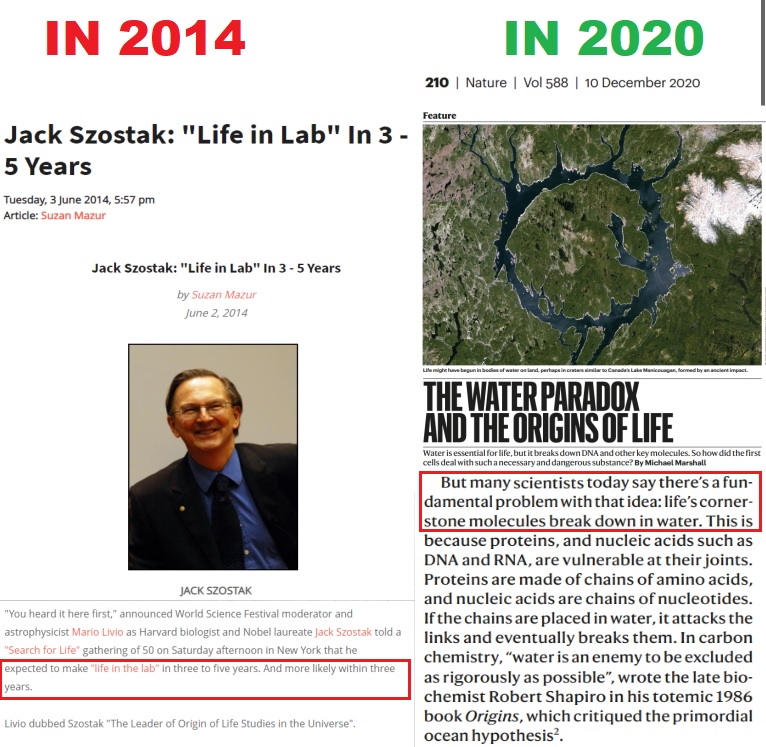
============================================================================================================================================
Syllogisms:
1. Life requires the use of a limited set of complex biomolecules, a universal convention, and unity which is composed of the four basic building blocks of life ( RNA and DNA's, amino acids, phospholipids, and carbohydrates). They are of a very specific complex functional composition and made by cells in extremely sophisticated orchestrated metabolic pathways, which were not extant on the early earth. If abiogenesis were true, these biomolecules had to be prebiotically available and naturally occurring ( in non-enzyme-catalyzed ways by natural means ) and then somehow join in an organized way and form the first living cells. They had to be available in big quantities, somehow purified, and concentrated at one specific building site.
2. Making things for a specific purpose, for a distant goal, requires goal-directedness. And that's a big problem for naturalistic explanations of the origin of life. There was a potentially unlimited variety of molecules on the prebiotic earth. Competition and selection among them would never have occurred at all, to promote a separation of those molecules that are used in life, from those that are useless. Selection is a scope and powerless mechanism to explain all of the living order, and even the ability to maintain order in the short term and to explain the emergence, overall organization, and long-term persistence of life from non-living precursors. It is an error of false conceptual reduction to suppose that competition and selection will thereby be the source of explanation for all relevant forms of the living order.
3. We know that a) unguided random purposeless events are unlikely to the extreme to make specific purposeful elementary components to build large integrated macromolecular systems, and b) intelligence has goal-directedness. Bricks do not form from clay by themselves, and then line up to make walls. Someone made them. Phospholipids do not form from glycerol, a phosphate group, and two fatty acid chains by themselves, and line up to make cell membranes. Someone made them. That is God.
1. On the one side, we have the putative prebiotic soup with the random chaotic floating around of the basic building blocks of life, and on the other side, the first living self-replicating cell ( LUCA ), a supposed fully operational minimal self-replicating cell, using the highly specific and sophisticated molecular milieu with a large team of enzymes which catalyze the reactions to produce the four basic building blocks of life in a cooperative manner, and furthermore, able to maintain intracellular homeostasis, reproduce, obtaining energy and converting it into a usable form, getting rid of toxic waste, protecting itself from dangers of the environment, doing the cellular repair, and communicate.
2. The science paper: Structural analyses of a hypothetical minimal metabolism proposes a minimal number of 50 enzymatic steps catalyzed by the associated encoded proteins. They don't, however, include the steps to synthesize the 20 amino acids required in life. Including those, the minimal metabolome would consist of 221 enzymes & proteins. A large number of molecular machines, co-factors, scaffold proteins, and chaperones are not included, required to build this highly sophisticated chemical factory.
3. There simply no feasible viable prebiotic route to go from a random prebiotic soup to this minimal proteome to kick-start metabolism by unguided means. This is not a conclusion by ignorance & incredulity, but it is reasonable to be skeptic, that this irreducibly complex biological system, entire factory complexes composed of myriads of interconnected highly optimized production lines, full of computers and robots could emerge naturally defying known and reasonable principles of the limited range of random unguided events and physical necessity. Comparing the two competing hypotheses, chance vs intelligent design, the second is simply by far the more case-adequate & reasonable explanation.
1. In Miller’s experiment he was careful to make sure there was no oxygen present. If oxygen was present, then the amino acids would not form. However, if oxygen was absent from the earth, then there would be no ozone layer, and if there was no ozone layer the ultraviolet radiation would penetrate the atmosphere and would destroy the amino acids as soon as they were formed. So the dilemma can be summed up this way: amino acids would not form in an atmosphere with oxygen and amino acids would be destroyed in an atmosphere without oxygen.
2. The next problem concerns the so-called handedness of the amino acids. Because of the way that carbon atoms join up with other atoms, amino acids exist in two forms—the right-handed form and the left-handed form. Just as your right hand and left hand are identical in all respects except for their handedness, so the two forms of amino acids are identical except for their handedness. In all living systems only left-handed amino acids are found. Yet Miller’s experiment produced a mixture of right-handed and left-handed amino acids in identical proportions. As only the left-handed ones are used in living systems, this mixture is useless for the evolution of living systems.
3. Another major problem for the chemical evolutionist is the origin of the information that is found in living systems. There are various claims about the amount of information that is found in the human genome, but it can be conservatively estimated as being equivalent to a few thousand books, each several hundred pages long. Where did this information come from?
4. If the many instructions that direct an animal’s or plant’s immune system had not been preprogrammed in the organism’s genetic system when it first appeared on earth, the first of thousands of potential infections would have killed the organism. This would have nullified any rare genetic improvements that might have accumulated. In other words, the large amount of genetic information governing the immune system could not have accumulated in a slow, evolutionary sense.a Obviously, for each organism to have survived, all this information must have been there from the beginning.
5.The sugar found in the backbone of both DNA and RNA, ribose, has been particularly problematic, as the most prebiotically plausible chemical reaction schemes have typically yielded only a small amount of ribose mixed with a diverse assortment of other sugar molecules.
6. all the peptide links to form a proptein must be alpha-peptide bonds, not some mix of alpha and epsilon,beta, and gamma bonds
http://www.newgeology.us/presentation32.html
"The first paradox is the tendency of organic matter to devolve and to give tar. If you can avoid that, you can start to try to assemble things that are not tarry, but then you encounter the water problem, which is related to the fact that every interesting bond that you want to make is unstable, thermodynamically, with respect to water. If you can solve that problem, you have the problem of entropy, that any of the building blocks are going to be present in a low concentration; therefore, to assemble a large number of those building blocks, you get a gene-like RNA -- 100 nucleotides long -- that fights entropy. And the fourth problem is that even if you can solve the entropy problem, you have a paradox that RNA enzymes, which are maybe catalytically active, are more likely to be active in the sense that destroys RNA rather than creates RNA."
7.amino acids and sugars combine and destroy each other. In lab experiments the component chemicals are neatly separated from one another. How is this possible in a primitive ocean?
8. Synthesis vs destruction - For chemical bonds to form there needs to be an external source of energy. Unfortunately, the same energy that creates the bonds is much more likely to destroy them. In the famous Miller experiment (1953) that synthesized amino acids, a cold trap is used to selectively isolate the reaction products. Without this, the would be no products. This poses a challenge to simplistic early earth schemes where lightning simply strikes a primitive ocean. Where is the "trap" in such an ocean? Also, the creation of amino acids by a chemist in a laboratory is still much different from forming self-replicating life.
Videos:
Abiogenesis? Impossible !!
https://www.youtube.com/watch?v=ycJblRcgqXk
Chemical evolution of amino acids and proteins? Impossible !!
https://www.youtube.com/watch?v=1L1MfGrtk0A&t=1143s
RNA & DNA: It's prebiotic synthesis: Impossible !! Part 1
https://www.youtube.com/watch?v=-ZFlmL_BsXE
RNA & DNA: It's prebiotic synthesis: Impossible !! Part 2
https://www.youtube.com/watch?v=dv4mUjmuRRU
Paul Davies & Jeremy England • The Origins of Life: Do we need a new theory for how life began?
https://www.youtube.com/watch?v=R9IU2ZWrkhg
Eric Smith on the Origin of Life
The Origins and Evolution of the Ribosome
https://www.youtube.com/watch?v=ei6qGLBTsKM
Ribosome Origins and Evolution - Prof. George Fox, University of Houston
https://www.youtube.com/watch?v=-ROJOBDCCLE
Central Dogma & Origin of the Ribosome
https://www.youtube.com/watch?v=x2DaEyfN0Ws
Difference between 70S and 80S Ribosomes (Prokaryotic vs Eukaryotic ribosomes) Subtitled
https://www.youtube.com/watch?v=MkfThTO-mj0
BIOGENESIS: The Emergence of the Fourth Geosphere by Eric Smith
https://www.youtube.com/watch?v=BgSal2Cv9qw
Inevitable Life ?
https://www.youtube.com/watch?v=ElMqwgkXguw
Abiogenesis is impossible
https://reasonandscience.catsboard.com/t1279-abiogenesis-is-impossible
The Cell is a Factory
https://reasonandscience.catsboard.com/t2245-the-cell-is-a-factory
DNA stores literally coded information
https://reasonandscience.catsboard.com/t1281-dna-stores-literally-coded-information
The possible mechanisms to explain the origin of life
https://reasonandscience.catsboard.com/t2515-the-possible-mechanisms-to-explain-the-origin-of-life
Calculations of life beginning through unguided, natural, random events
https://reasonandscience.catsboard.com/t2508-calculations-of-life-beginning-through-unguided-natural-random-events
The cell is irreducibly complex
https://reasonandscience.catsboard.com/t1299-the-cell-is-irreducibly-complex
The irreducible, code-instructed process to make cell factories and machines points to intelligent design
https://reasonandscience.catsboard.com/t2364-the-irreducible-code-instructed-process-to-make-cell-factories-and-machines-points-to-intelligent-design
Coded information comes always from a mind
https://reasonandscience.catsboard.com/t1312-coded-information-comes-always-from-a-mind
All cellular functions are irreducibly complex
https://reasonandscience.catsboard.com/t2179-the-cell-is-a-interdependent-irreducible-complex-system
The Cell membrane, irreducible complexity
https://reasonandscience.catsboard.com/t2128-membrane-structure#3798
The Interdependency of Lipid Membranes and Membrane Proteins
https://reasonandscience.catsboard.com/t2397-the-interdependency-of-lipid-membranes-and-membrane-proteins
Factory and machine planning and design, and what it tells us about cell factories and molecular machines
https://reasonandscience.catsboard.com/t2245-factory-and-machine-planning-and-design-and-what-it-tells-us-about-cell-factories-and-molecular-machines
Genome information, protein synthesis, the biosynthesis pathways in biology, and the analogy of human programming, engineering, and factory robotic assembly lines
https://reasonandscience.catsboard.com/t1987-information-biosynthesis-analogy-with-human-programming-engeneering-and-factory-robotic-assembly-lines
What might be a Cell’s minimal requirement of parts?
https://reasonandscience.catsboard.com/t2110-what-might-be-a-protocells-minimal-requirement-of-parts
How Cellular Enzymatic and Metabolic networks point to design
https://reasonandscience.catsboard.com/t2371-how-cellular-enzymatic-and-metabolic-networks-point-to-design
Amazing molecular assembly lines and nonribosomal amino-acid chain formation pathways come to light
https://reasonandscience.catsboard.com/t2445-new-amazing-molecular-assembly-lines-and-non-ribosomal-amino-acid-chain-formation-pathways-come-to-light
More readings:
1. http://www.ichthus.info/Evolution/information.html
2. Kerkut, G.A., Implications of Evolution, Pergamon, Oxford, p. 157, 1960. He continued: ‘the evidence which supports this is not sufficiently strong to allow us to consider it as anything more than a working hypothesis.’
3. http://worldview3.50webs.com/mathproofcreat.html
4. http://pubs.acs.org.sci-hub.cc/doi/abs/10.1021/ar200332w
5. Earth Evolution of a Habitable World, Second edition
Stephen C. Meyer: DNA AND OTHER DESIGNS April 2000
https://www.firstthings.com/article/2000/04/dna-and-other-designs
Thomas F. Heinze: Scientific Evidence that God Created Life
https://creationism.org/heinze/SciEvidGodLife.htm
Chuck Missler: The Origin of Life and The Suppression of Truth
http://xwalk.ca/origin.html
The Odds
http://xwalk.ca/origin.html#fn20
Abiogenesis Is Impossible
https://www.debate.org/debates/Abiogenesis-Is-Impossible/1/
The Miller-Urey experiment
http://www.truthinscience.org.uk/tis2/index.php/component/content/article/51.html
15 loopholes in the evolutionary theory of the origin of life: Summary
http://creation.com/loopholes-in-the-evolutionary-theory-of-the-origin-of-life-summary
Primordial_soup
http://en.wikipedia.org/wiki/Primordial_soup
https://answersingenesis.org/origin-of-life/the-origin-of-life-dna-and-protein/
Abiogenic Origin of Life: A Theory in Crisis
https://origins.swau.edu/papers/life/chadwick/default.pdf
Chance and necessity do not explain the origin of life
http://www.creationism.org.pl/groups/ptkrmember/inne/2004/Trevors,%20Abel,%20Chance%20and%20necessity%20do%20not%20explain%20the%20origin%20of%20life.pdf
The Origin of Life: What We Do and Don’t Know
http://hea-www.cfa.harvard.edu/lifeandthecosmos/wkshop/sep2012/present/CleavesSILifeInTheCosmosTalk2012b.pdf
Plausible prebiotic synthesis
https://www.science.gov/topicpages/p/plausible+prebiotic+synthesis.html
Moshe Averick:It’s Easy to Be an Atheist if You Ignore Science AUGUST 10, 2016
https://www.algemeiner.com/2016/08/10/its-easy-to-be-an-atheist-if-you-ignore-science/
Ashby L. Camp: COMPILATION OF QUOTES ON THE COMPLEXITY OF A CELL AND THE SCIENTIFIC MYSTERY OF LIFE'S ORIGIN
http://theoutlet.us/Quotesoncomplexityofcellandoriginoflife.pdf
Origin of life quotes
Atheist myths debunked - Abiogenesis - the spontaneous generation of life from sterile matter.
https://www.flickr.com/photos/truth-in-science/16208667768/in/photolist-qGiEe7-ntpng3-p47acs-v2h544-pVpvA2-qLrk28-pVCjgF-ptctWq-pQYvD8-GC7wCj-r9SUPL-prfnyL-pw4eKS-kJEHCU-pkvDrJ-obZFsS-nVM5f7-kwT4qB-mBQN2N-q4AvLr-kmqhat-kmpZ5r-kjQn6r-kmstMU-kJVYxn
Last edited by Otangelo on Fri Oct 04, 2024 2:34 pm; edited 255 times in total




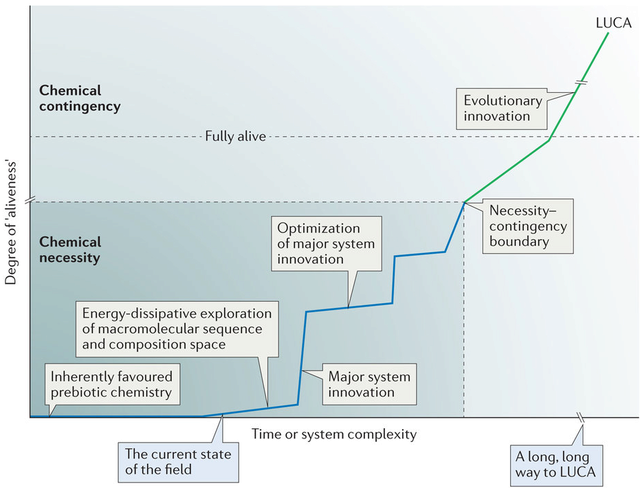

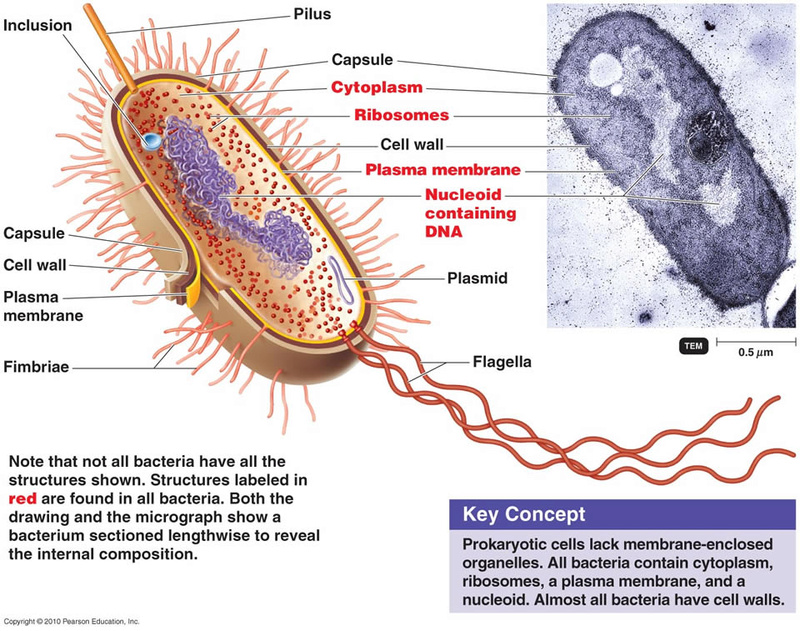

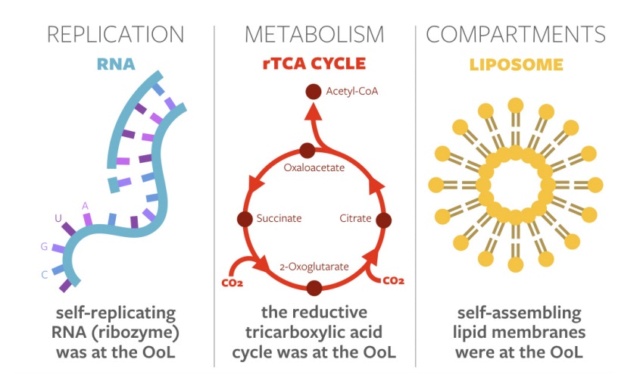



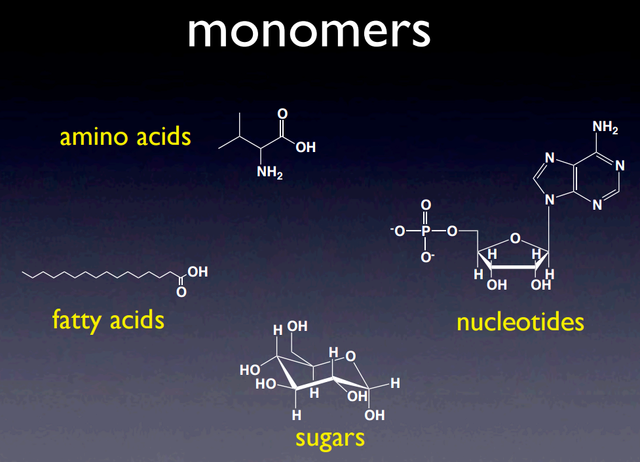
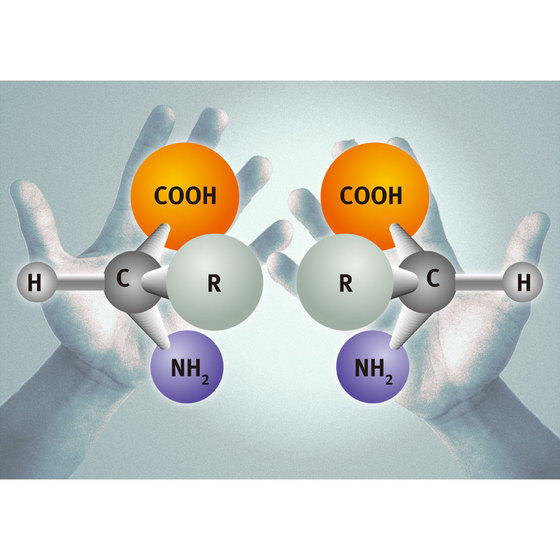
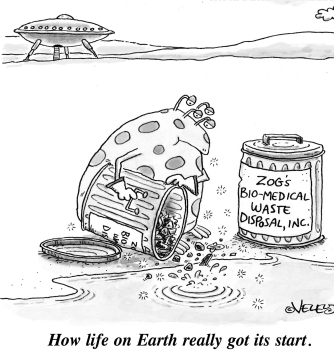
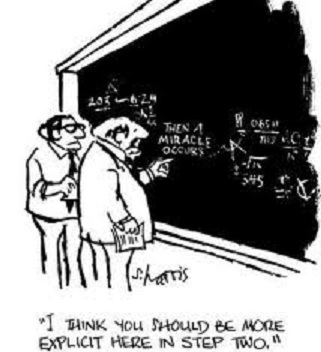


 Tell us about the famous electrical discharge experiment.
Tell us about the famous electrical discharge experiment.